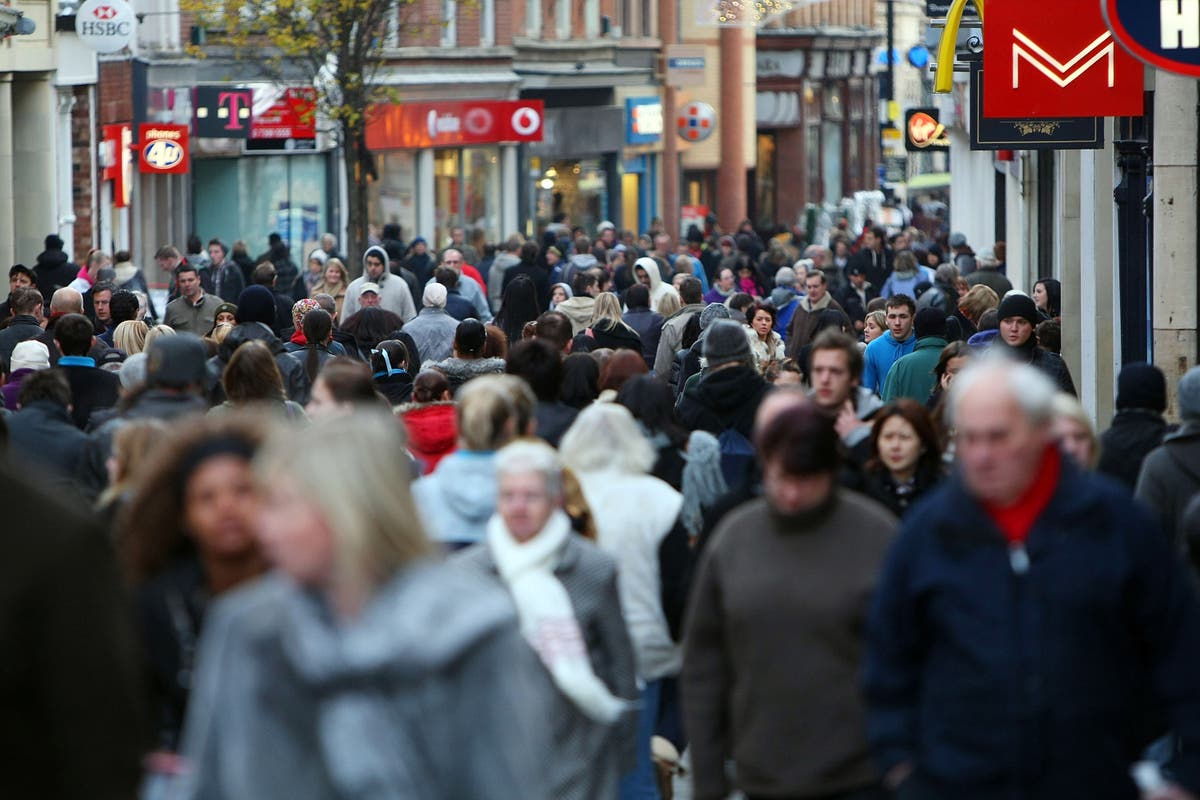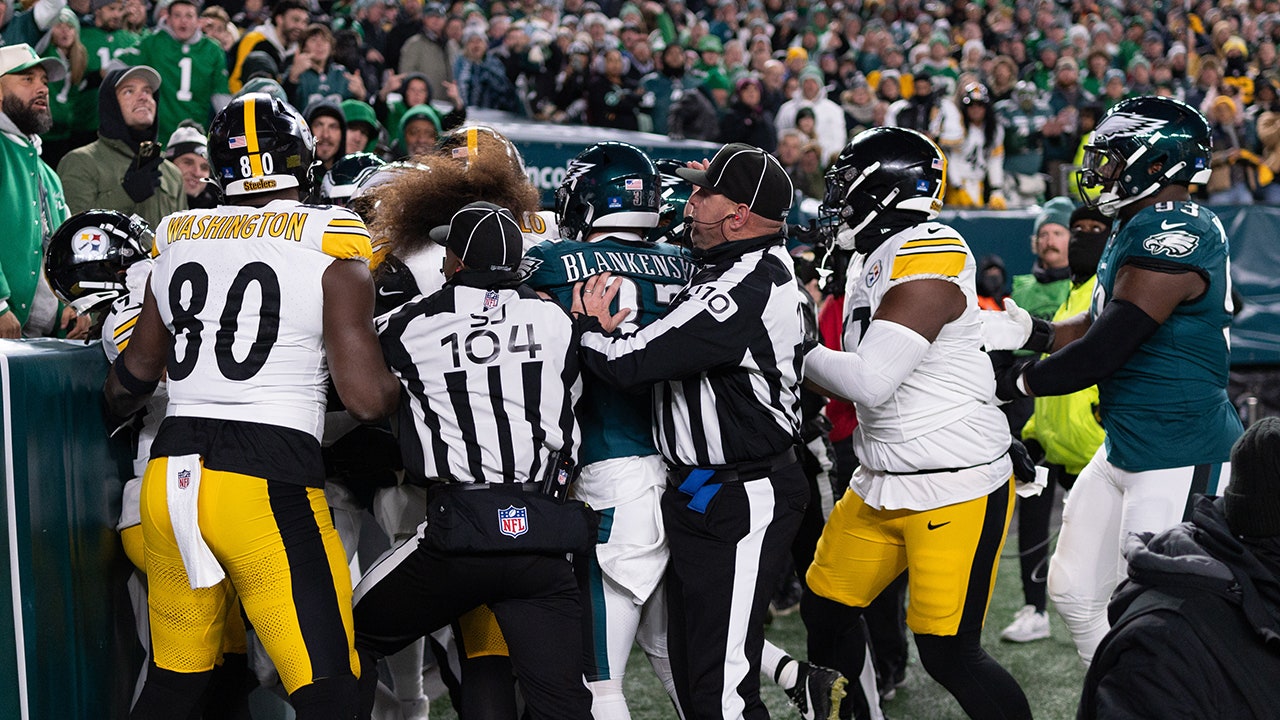Compared with the fizzy new developments that line this square — a Big Tech project planned at the height of pre-pandemic urban exuberance — “Queen City” is analog and earthy, almost anachronistic. The material contrast looks intentional. The historical friction, even more so.
“Queen City” refers to a Black community that once occupied part of the area known formally as East Arlington. In the 1940s, planners forced out the residents of Queen City to make way for construction as the Pentagon took shape during the wartime boom. Homeowners were given little more than a month’s notice and only nominal compensation (if any) when the War Department seized their properties. Bricks protruding from Durrett’s tower spell out the community’s name in a typeface that recalls the old documents published by the Sanborn Map Company to help insurers determine the fire risk of a neighborhood. Rising about 35 feet high, Durrett’s “Queen City” sculpture serves as a dark marker for the toll of displacement — for Black communities, a force as destructive as any blaze.
Given its location, “Queen City” is a doubly thoughtful exercise. While the piece harks back to a community destroyed by top-down planning, it’s also an iconic component of a sweeping development effort that some critics warned would harm the DMV region.
After all, “Queen City” is not the only curious structure planned for this part of town. Metropolitan Park is at the heart of a campaign by Amazon to terraform parts of Crystal City and Pentagon City, remaking them as a new “National Landing” anchored by the tech company’s second headquarters. The most visible symbol of this push would be the glass-spiral Helix tower, designed by architecture firm NBBJ for the next phase of Amazon’s rollout.
Yet while Met Park and its two gleaming 22-story towers are now open for business, work has stalled on PenPlace, the campus set to include Amazon’s Helix. (Amazon founder Jeff Bezos owns The Washington Post.)
What is certain is that the new park — designed by James Corner Field Operations, the landscape architects responsible for the High Line in New York — is a distinguished amenity for Arlington, complete with native Virginia plantings and unrivaled dog runs. And with the future of the Helix up in the air, “Queen City” may be the thing that grounds National Landing.
Public art is a fitting turn for Durrett, a native Washingtonian who doesn’t seem to favor any particular medium but likes to work big. Her past projects include stained-glass abstractions at the Phillips Collection, text-based art cut into the grass of the Parks at Walter Reed and clay dials that make up photo-mosaic portraits at Duke Ellington School of the Arts. She is far from a traditionalist, yet a concern for craft runs through her work.
Making this piece saw Durrett step into the role of architect. “Queen City” is an occupiable structure, built with the assistance of local consultants and engineers. It was built to last: A concrete superstructure supports the 5,000-odd reclaimed bricks that form the facade. The artist made thoughtful selections about the construction of the building, from the reclaimed mushroom wood for the tower’s front door to the wood-formed concrete texture along its interior walls to the rhythm of the windows punctuating its cylindrical drum.
To fill out “Queen City,” Durrett enlisted 17 Black ceramists from around the country to make vessels that summon to mind the shape and color of water. Altogether, they formed 903 tear-shaped objects in a range of colors and textures, each one standing for a resident who was expelled from Queen City. Within the tower, viewers will find a wellspring of creativity and an outpouring of grief for a community that, until its hastily planned demise in 1942 — an act sanctioned by President Franklin D. Roosevelt himself — never had access to running water.
With “Queen City,” Durrett joins a small band of artists who have built dedicated structures designed for intense experiences with art. Among the best known are Mark Rothko’s chapel in Houston, Ellsworth Kelly’s sanctuary in Austin and Louise Nevelson’s shrine in New York. (The latter two are temporarily closed for restoration.) Like these artists, Durrett has created a controlled environment for reflecting on craft, community and history; unlike these others, Durrett has mostly yielded the floor to other artists.
(Even the literal floor of the project is a forum for another maker: Using soil sourced from the area, local Red Dirt Studio founder Margaret Boozer created tear-shaped ceramic tiles, inlaid in a gorgeous medallion pattern in the ground inside the tower.)
Some of the decisions about “Queen City” are arguable. There’s too much text: lines of copy on the window of the front door that explain the history of East Arlington, for example, or names on the medallion highlighting other Black communities forcibly removed from the region. At the top of the tower is a skylight to illuminate the structure and highlight the ceramics inside; color-changing lights installed around this oculus bathe the ceramic installation in shifting monochrome sequences that wash out the individual tones. These choices are reasonable, but they detract from an experience that could be more serene.
Those are minor quibbles, though. What Durrett has done here is significant: Few artists ever get to work on a civic project of this scale, and when they do, at least in the D.C. area, they’re inevitably national figures. For Durrett to take the opportunity to turn that spotlight on other artists is more than a magnanimous gesture. It’s a way of embracing community to underscore the value of community. (“Visionary Not Reactionary,” an ongoing exhibit curated by the artist collective For Freedoms for the Meridian International Center in Northwest Washington, a show that includes Durrett’s work, underscores the theme.)
For the stroller pushers and dog walkers lured to Metropolitan Park by its bandshell-style benches and meandering shady paths, the project is already delivering on pedestrian comforts. “Queen City” adds another dimension to the development. It’s eye-catching, yes, eyebrow-raising, even, but something more: “Queen City” is a portal to the past, a structure for reflection and a mode of memorial that is inviting yet unflinching.
Whether “National Landing” stands the test of time, “Queen City” is designed to endure.
Metropolitan Park, corner of South Fair and 14th streets, Arlington. nekishadurrett.com/queen-city.
Dates: On permanent view daily from sunrise to sunset.















































